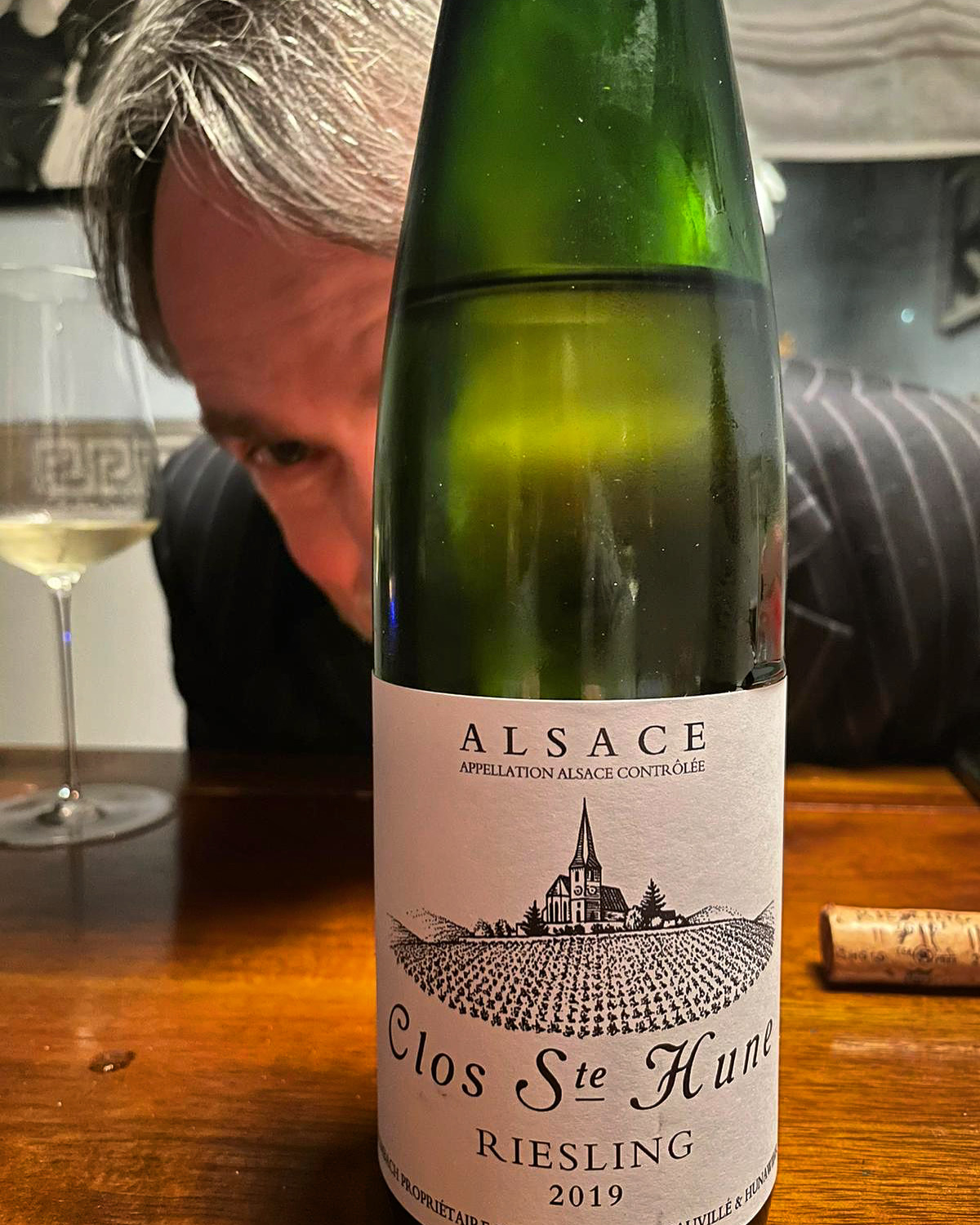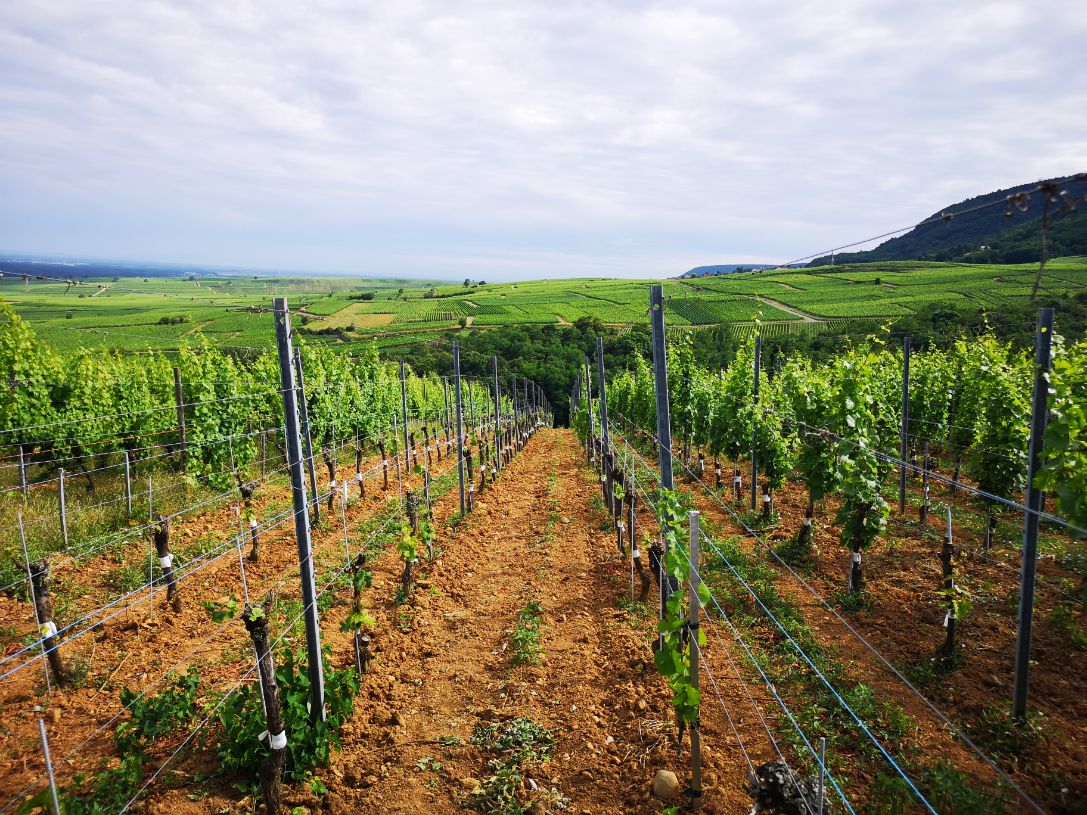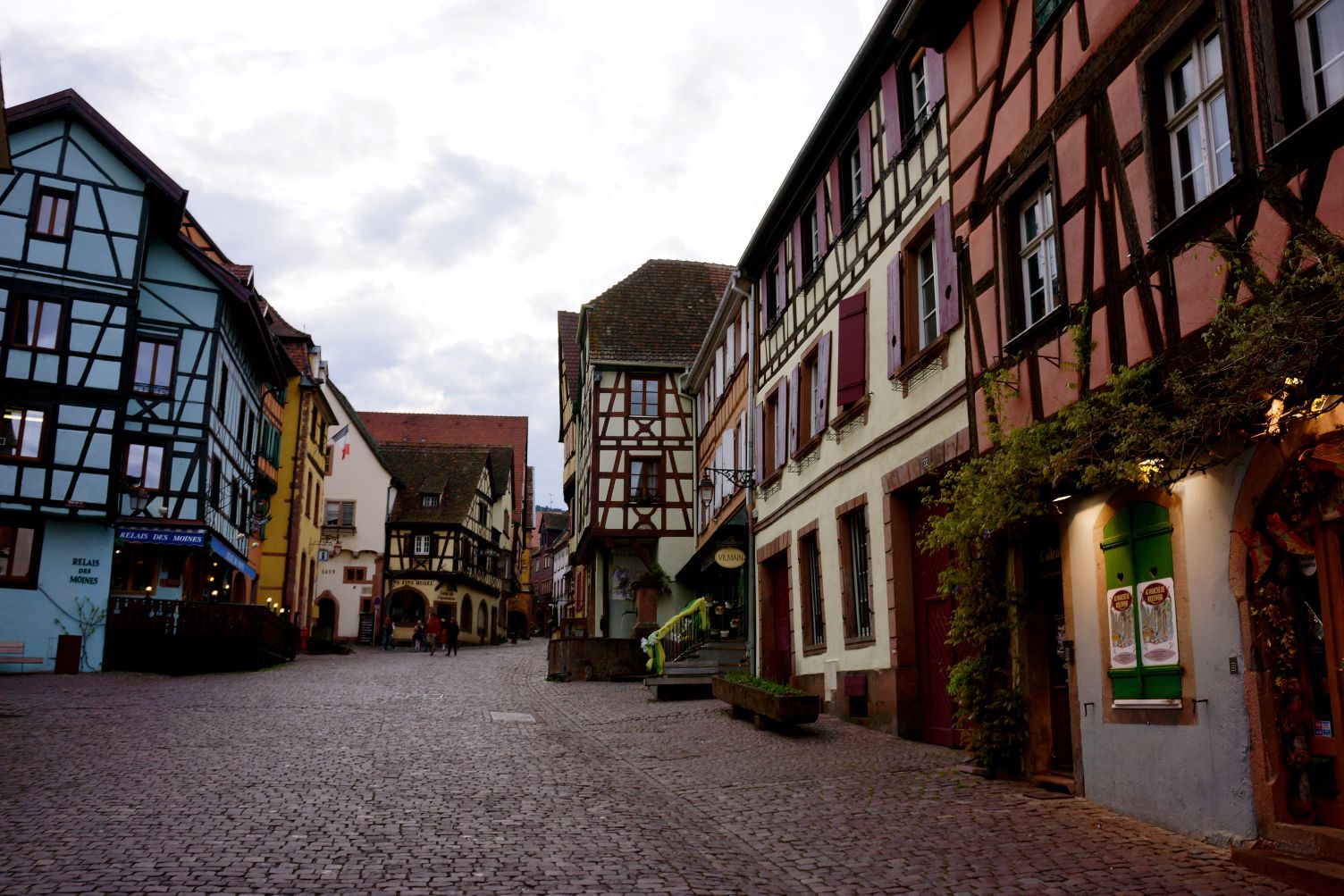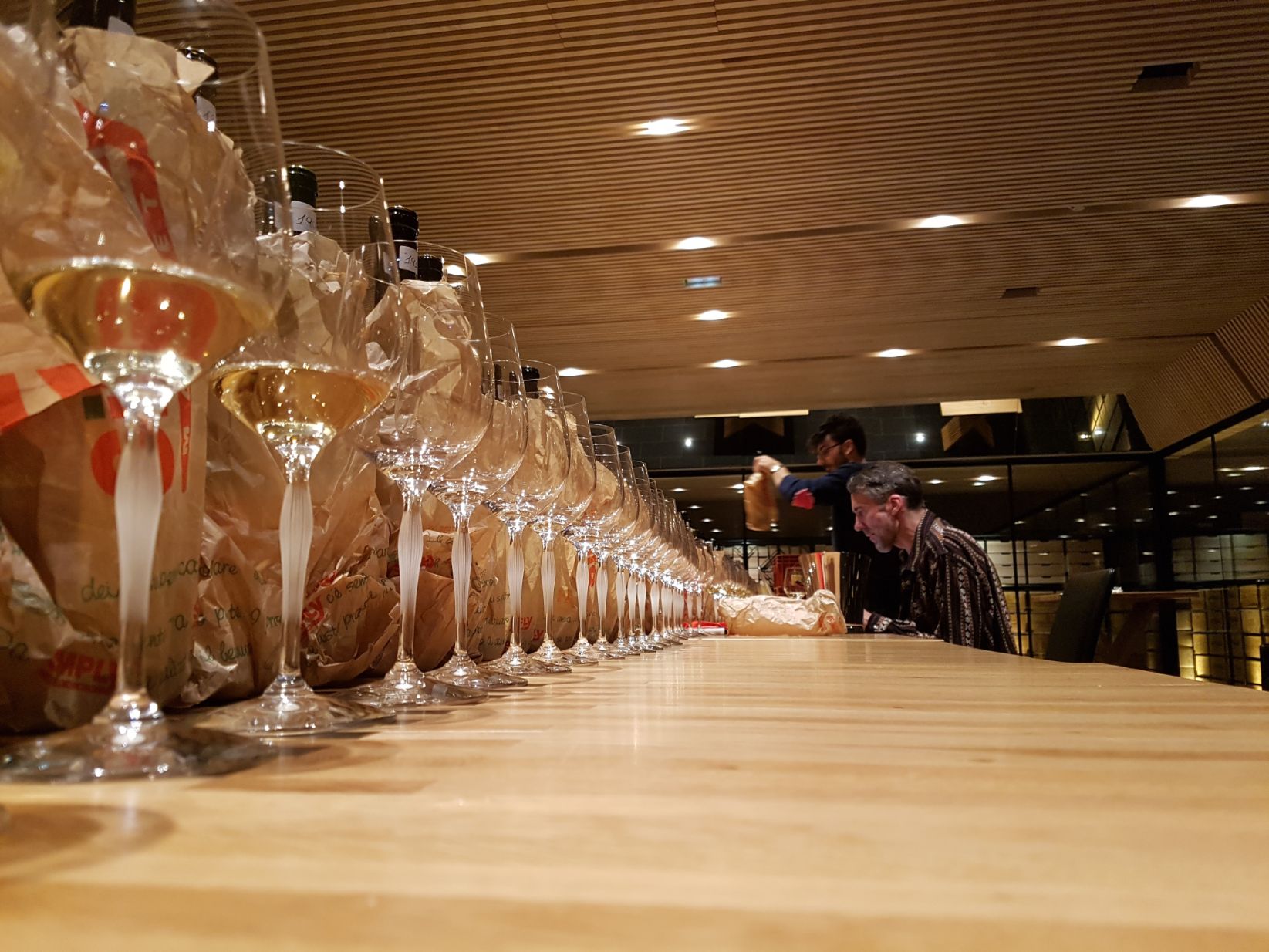Alsace’s Fireworks and Crisis

Stuart Pigott peers out from behind the Trimbach Riesling Alsace Clos Ste. Hune 2019, which he rated 100 points.
I was just about to leave for Alsace to research this report when President Macron made a major speech announcing new rules to contain the spread of Covid-19 that forced me to cancel. So, the closest I got to any of the region’s leading winemakers was in a series of Zoom tastings. However, from what they said there was no mistaking the big news: the bulk wine price for gewurztraminer, widely regarded as Alsace’s signature grape variety, has collapsed due to an abrupt fall in demand. Nor was there any doubt that it was the virus that pushed it over the edge. But there was another much brighter side to my research: the almost 350 samples I tasted from the region’s leading producers told an overwhelmingly positive story.
To begin with, 2019 is probably the best vintage for the dry whites – historically Alsace’s most important wines – in decades. “2019 is simply beautiful!” said Jean Trimbach of the Trimbach family winery. “It was a very warm vintage, but with a great acidity that perfectly balances the ripeness”.
This was clearest in the highest scoring wine of this report, the Riesling Clos Ste Hune 2019 from Trimbach rated a perfect 100 points, which will be released on the market in 2024. As much as we love many other vintages of this legendary dry riesling, for us the centenary vintage (1919 was the first) is probably the best ever Clos Ste. Hune due to its perfect combination of depth, brilliance and finesse.

New plantings in vineyards in Alsace during a tasting trip a few years ago. Many producers are swapping gewurztraminer for pinot noir or pinot blanc.
However, a number of other Alsace dry Rieslings I tasted were also seriously amazing. The very concentrated and ripe yet precisely balanced Riesling Grand Cru Schlossberg Cuvée Ste. Catherine 2018 from Domaine Weinbach and the astonishingly fresh and highly structured Riesling Schoelhammer 2010 (yes, that’s the current vintage) both rated 99 and are extraordinary expressions of this food-friendly category.
Although 2018 was a much more challenging vintage due to the continuous summer heat (in 2019 the extreme heat came in short phases), Weinbach was certainly not the only producer to shine with their 2018s. Domaine Zind-Humbrecht showed a stunning collection of 2018s of which 13 wines rated 95 or above, the Pinot Gris Grand Cru Rangen Clos St Urabin 2018 topping this amazing series with 98 points. It shares an incredible vitality with deep smoky character, intense minerality and no hint of over-ripeness; as common a problem in 2018 as hollowness on the palate (the latter due to drought stress).
I also tasted quite a number of 2017 whites, since many leading Alsace producers release their wines quite late. Here the shining star was the Grand Cru Schoenenbourg 2017 from Domaine Marcel Deiss, a co-fermented field blend of varieties based on riesling that rated 98. Although off-dry this wine has impeccable balance and great complexity. The number of non-varietal Alsace wines has increased significantly in recent years and this is now an important category in the region.

A rainy summer’s day during a tasting trip a few years back in Riquewihr. The Hugel winery can be seen in the background.
2018 is a stunning vintage for the pinot noir reds that are the newest specialty of Alsace. Here too climate change is clearly perceptible. As Jean-Frédéric Hugel of Familie Hugel said, “We went from having problems with under-ripeness to struggling with over-ripeness in just 20 years!” His still very lively Pinot Noir Grossi Laüe 2013 showed that when Alsace producers get the ripeness right, their wines can match Burgundy not only in elegance, but also in aging potential. We rated it 93.
The highest-rated pinot noirs this year were the extremely deep and complex Pinot Noir Grand H 2018 from Albert Mann (98 points), the incredibly fragrant and tightly focused Pinot Noir Bollenberg Luft 2017 from Domaine Valentin Zussling (96 points), the Pinot Noir Clos Saint Landelin 2018 from Muré (96 points), the Burlenberg La Colline Brùlée 2017 from Domaine Marcel Deiss (95 points), the Pinot Noir Premier 2018 from Domaine Kirrenbourg (95 points), and Pinot Noir Fronholz 2018 from Domaine Ostertag (95 points). For pinot noir Alsace now has a leading pack!
Finally, back to the gewurztraminer murder mystery. For some years at JamesSuckling.com we’ve felt this is the grape that Alsace winemakers are struggling with most. The problems begin with the fact that gewurz is more often an off-dry or frankly sweet wine than it is dry one, plus those wines tend to be high in alcohol and low in acidity (and high pH). No wonder they often taste opulent and sometimes flabby too. Worse still, when doing pre-fermentation skin-contact to get the aromatic extravagance the grape is famous for, the wines often pick up a slug of tannin and bitterness. That leads to a “balance” light years removed from the 21st century dry white wine ideal. Hence the steadily shrinking market this category was confronted with during the last years, but that’s just the back story to the gewurz crisis.
Some of the 320+ wines we tasted for this report.
Alsace has many historic and picturesque towns and villages, most famously Colmar, Kaysersberg and Riquewihr. Walking through one of them on a warm summer’s day in the past you’d see droves of tourists purchasing bottles of gewurz to take home and drinking gewurz in Winstub, or rustic wine bars. Tourists always tend to go for local specialties. Because of the virus in 2020 few tourists visited and sales were mostly lost, which hit the bottom end of the market.
“I expect a wave of gewurztraminer vine pulling and vineyard replanting,” commented Jean-Frederic Hugel. “Thankfully we don’t have a gewurztraminer problem though!” We expect a further shift towards riesling and pinot blanc (often a blend of pinot blanc and auxerroir), the grapes that produce Alsace’s most popular dry whites. The other winner will be pinot noir for reds, as this is a growing market. Already, this year more samples of pinot noir red wine were submitted to us than either gewurztraminer or pinot gris. The times they are a-changin’ in Alsace!
– Stuart Pigott, contributing editor

Stuart Pigott tastes at the Lalique headquarters in Alsace two years ago.






